
The container school: A Palestinian Bedouin community's fight for education

The clouded sky over the Ain Samiah Valley gives the early morning a cold grey tone, as Tareq Othman walks with heavy steps along the muddy road down to the Bedouin village.
Grass has already grown after the first rains of the year, forming a thin green carpet on the surrounding hills, falling in between the tents. Some 32 families live in the community classified as area ‘c’, without public services or infrastructure, and until late November, without a school.
“These people arrived here right after 1967 when the Israeli occupation expelled them from the Jordan Valley where they had lived for generations,” explains Tareq Othman, the local activist from the neighbouring village of Kufr Malik. “These Bedouin villages are the only thing standing between Israeli settlements and taking over the rest of the eastern slopes of the West Bank," he stresses.
Israel does not allow Palestinians to build in area ‘c’, where the Palestinian Authority has no civil or security presence. Children from Bedouin communities often have to walk long distances to reach school in the nearest Palestinian town, which adds to the many difficulties facing these communities, who strive to stay in their land, facing the threat of demolition, by Israeli authorities, of any new structure they build.
Six months ago, a number of families in the Bedouin village decided to build a school right where they live. Tareq Othman donated a piece of land he owns, just a hundred metres from the village, for this purpose.
The Palestinian PLO-run Colonization and Wall Resistance Commission adopted the project, and a number of European development agencies sponsored it. Then in November, in clear defiance to Israeli de-facto authorities and in the middle of unusual conditions, the community erected the school. Now, they are trying to finish it, and prevent its demolition.
Tareq Othman walks past a small hill, upon which stands a long structure made of containers, with rectangular windows along its side. “I can’t believe it's still standing,” he expresses with a slight laugh while making his way down to the village.
In his salon, arranged inside a large container, the chief of the community, Abu Najeh, welcomes Tareq Othman with a cup of heavily-sugared tea with mint, that he personally serves him.
“These people of the civil administration are not willing to leave us alone,” exclaims Abu Najeh with a low, deep tone. “They came again yesterday and took photos of the school surroundings and threatened that if anything is added to it they will demolish it.”
The Israeli civil administration’s urban planning authority is the body that surveys Palestinian communities in area ‘c’. Its teams regularly make tours into the communities to make sure that the construction ban is observed.
In theory, Palestinians have the right to request special building permits, in some 400 special zones in area ‘c’. In reality, these special zones cover less than 1% of area ‘c’, and the immense majority of Palestinian permit requests are denied.
In mid-February, the Israeli defence ministry made public that only 33 building permit requests, made by Palestinians in area ‘c’, were approved by the civil administration between 2017 and 2021.
Israeli news outlet Times of Israel reported that the rejection rate of building permits requests reached 99.1% between 2016 and 2020, with some 1100 Palestinian structures being demolished in half a decade.
According to the UN Office of Coordination of Humanitarian Affairs in the Palestinian territories, OCHA, Israel demolished some 911 Palestinian structures in 2021, displacing 1208 Palestinians, and has already demolished 192 structures and displaced 232 Palestinians in the first months of 2022. Around 79% of those demolitions are in area ‘c’, and the rest are in eastern Jerusalem.
Abu Najeh sits on his Bedouin floor sofa in the middle of his salon and begins to wrap a local tobacco cigarette, while he tells his community’s story.
“In 1969, just two years into the Israeli occupation of the West Bank, I was in my early twenties,” he recalls. “The Israeli army forced us out of our lands in the Jordan Valley, loading most of the families in a military bus in a single day and brought us here,” he says as he blows a thick cloud of smoke.
“In the early 1970s Israeli settlers moved in, and since then we are o longer safe,” notes Au Najeh. “They regularly attack our sheep in the valley, killing or stealing them, and they also harass our children on their way to school in Kufr Malik.”
Kufr Malik is the nearest town to Ain Samiah valley, some six kilometres from the Bedouin village. Abu Najeh’s 14-year-old grandson, Ibrahim, used to study there.
“I used to wake up at five in the morning and walk all the way to school with my friends and cousins, but sometimes we took turns riding the donkey,” says Ibrahim.
“We made a long turn around the road to avoid Israeli settlers, but more than once we found them waiting for us on our way back home,” he shares with a slow, shy tone. “One time, three of them chased us with rocks and we had to run all the way home to escape them.”
Ibrahim remembers the big school at Kufr Malik, with a sports hall, a ping-pong table, a lab and a playground. However, he prefers his small new school in the village. “It’s near home so I don’t have to wake up that early and walk, there are no settlers on the way, and it’s only Bedouin kids from the village, so nobody bullies us for being Bedouin.”
As Ibrahim shares his school experience, another man enters the chief’s salon and joins the conversation.
“I had stopped sending my children to school, because of Israeli settlers on the road,” explains Mustafa, a father of four in his mid-forties. “Many children in the community have dropped out of school because of this, so we had no choice but to build the school.”
The civil administration teams constantly monitor all activity in the valley, as Mustafa points out; “A week ago, I was herding the sheep up the hill when I came across an Israeli civil administration trooper. He told me that he knew about the wooden door I had installed at the entrance of a cave to keep the sheep and that he was only waiting for the rain season to end to come and remove it.”
Under such conditions, the simple act of putting the mere structure of a school upstanding is a risk. “The civil administration had warned us that as soon as we begin building the school, they will come and stop the works, so we had to do it at night,” notes Mustafa.
“There were around 70 volunteers from the Palestinian Colonization and Wall Resistance Commission, and together we had the school built before dawn,” Mustafa recalls the details with a large smile.
Tareq Othman and the community chief also smile and nod their heads in affirmation. “The civil administration officer came two days later and was furious,” goes on Mustafa, “he began to take photos of the school and threatened to demolish it.”
Despite the apparent temporary success, building the school skeleton was the easy part. As Tareq Othman explains, “We only had time to put the cement base and install the containers, but then we have to make the inside walls, isolate them, install the billboards and other appliances, under the watch of the civil administration.”
Although the chances of saving the school are meagre, the community has decided to take the fight to the next level. “Before we build the school, we had already taken our case to the Israeli court,” says Tareq Othman.
The defence of the school in Israeli courts was taken charge of by the non-government Jerusalem Legal Aid Center (JLAC). Ten days after its construction, JLAC’s lawyers obtained a decision from the Israeli court to freeze any demolition until a final court ruling.
“We had prepared our papers in advance, so we obtained the freezing order fast enough and bought some time,” Wael, Al-Qutt, the JLAC lawyer defending the case, told The New Arab. “We need to use this time to crowd in as much support as possible, locally and internationally, to try and save the school from demolition,” Al-Qutt added.
“It’s recess time, welcome!” exclaims a young female teacher with a smile, while a small group of children play with a ball in a dirt-floor yard in front of the school. It has been two weeks since the visit to the community chief. It’s ten in the morning and Tareq Othman is making a visit to the school.
The story of the school at Ain Samiah Valley attracted the attention of Palestinian media. The Palestinian of education then recognized it and appointed three teachers, who travel to the village and back to their hometowns every day.
“We have ten children at the moment, two of them are in 5th and 6th grade, while the rest are in 1st and 3rd grade,” explains Muntaha, one of the teachers. “We gather the older ones and the younger ones in two groups for some subjects like math and Arabic language. But for other subjects like science or social studies we split them,” she adds.
Many children at Ain Samiah haven’t attended classes for a long time, and it takes more than building a school to put them back on track with learning. “Some children are eleven, but still can’t read or write,” points out Muntaha. “We have to do a work of illiteracy erasing and keeping up with the curriculum, at the same time.”
While the children enjoy their recess, Tareq Othman shares a cup of tea with the teachers. “See that sign?” he indicates. “That’s all the foreign agencies who took credit for building these two rooms,” he exclaims with irony. “All those people together could have built a university,” responds Muntaha, amidst nods and smiles from her two colleagues and Tareq Othman.
Muntaha is from the town of Beita, south of Nablus. She makes her trip to work at Ain Samiah Valley and back every day.
“I leave my home at six in the morning and take the bus from the centre of Beita to the crossroads,” she details her daily journey. “Then, I have to take a second bus to Nablus. Then in Nablus, I take a third bus to Ramallah, and in Ramallah, I take another one to Kufr Malik. Then in Kufr Malik, I join my colleagues and a mini-bus drives us to Ain Samiah, and then it’s the same way back.”
Although the ministry of education covers the teacher’s transportation fees, their salaries are less than just enough. Each teacher is paid an average of 1500 shekels (less than $500) monthly for doing the trip and the job.
“We also lack material,” underlines Muntaha. “We have one billboard and we take turns to use the room where the billboard is, and we also lack textbooks, stationary and teaching tools.”
When recess is over, the children enter the rooms for their last period. Each two of them sit on one of the old and rusty benches and share the same textbook.
In the room with the billboard, it’s math class for the older ones. The young teacher calls to the board her best student, a 12-year-old girl, who shows her skills in solving equations.
Outside, Tareq Othman chats with Abu Najeh, the community chief, who has come to say Hi. “Things are going well so far,” says Tareq Othman, as children come out of class and begin to walk with their school bags down the hill to the village, while teacher Muntaha closes the teachers' room door.
“For another day, at least,” replies Abu Najeh.
Qassam Muaddi is The New Arab's West Bank reporter, covering political and social developments in the Palestinian territories since 2014 in Arabic, English and French. He has co-authored two books in French, Terre Sainte Guerre Sainte? and Taybeh, dernier village Chrétien de Palestine. He is also the founder and editor of the 7ara36 blog in Arabic.
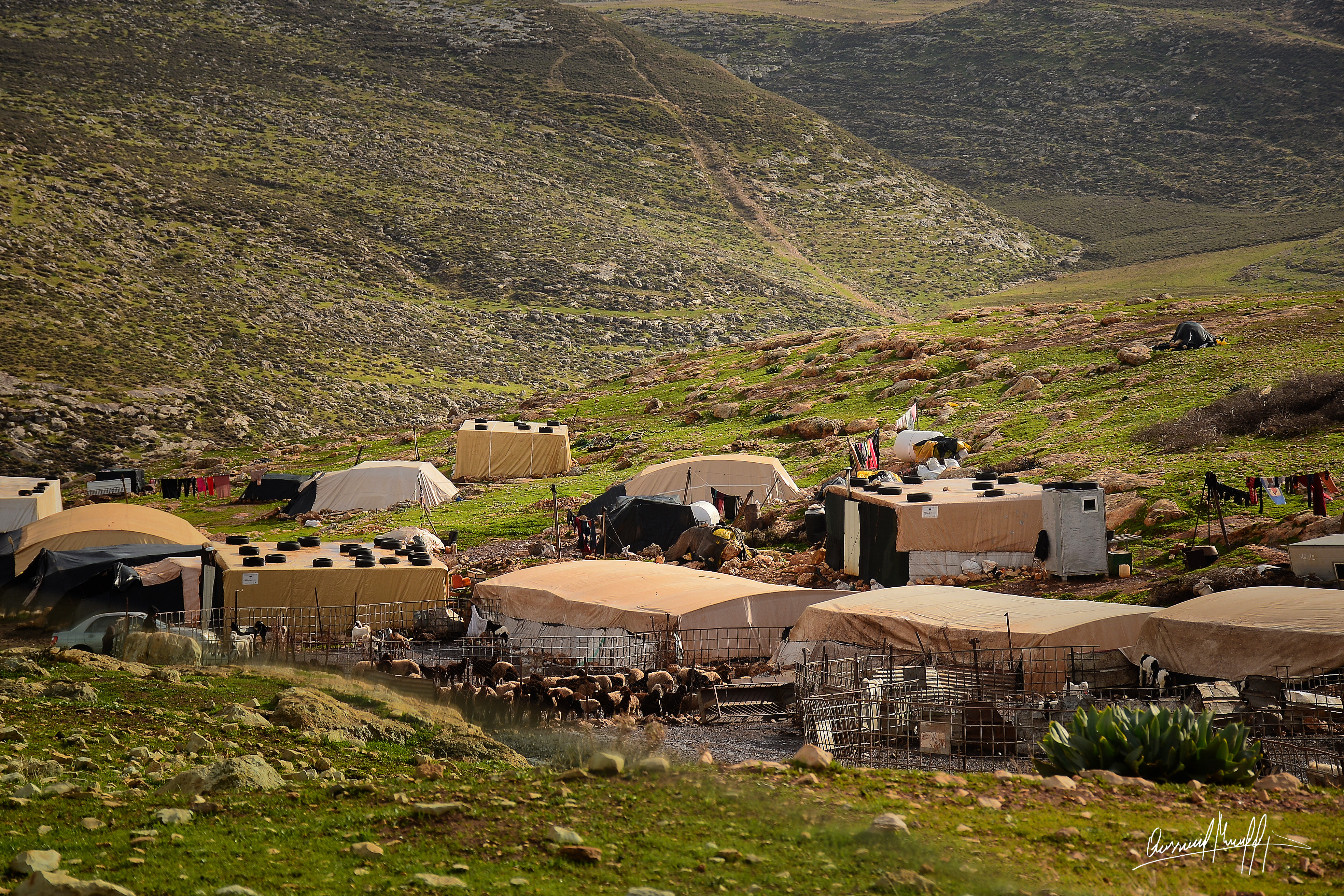





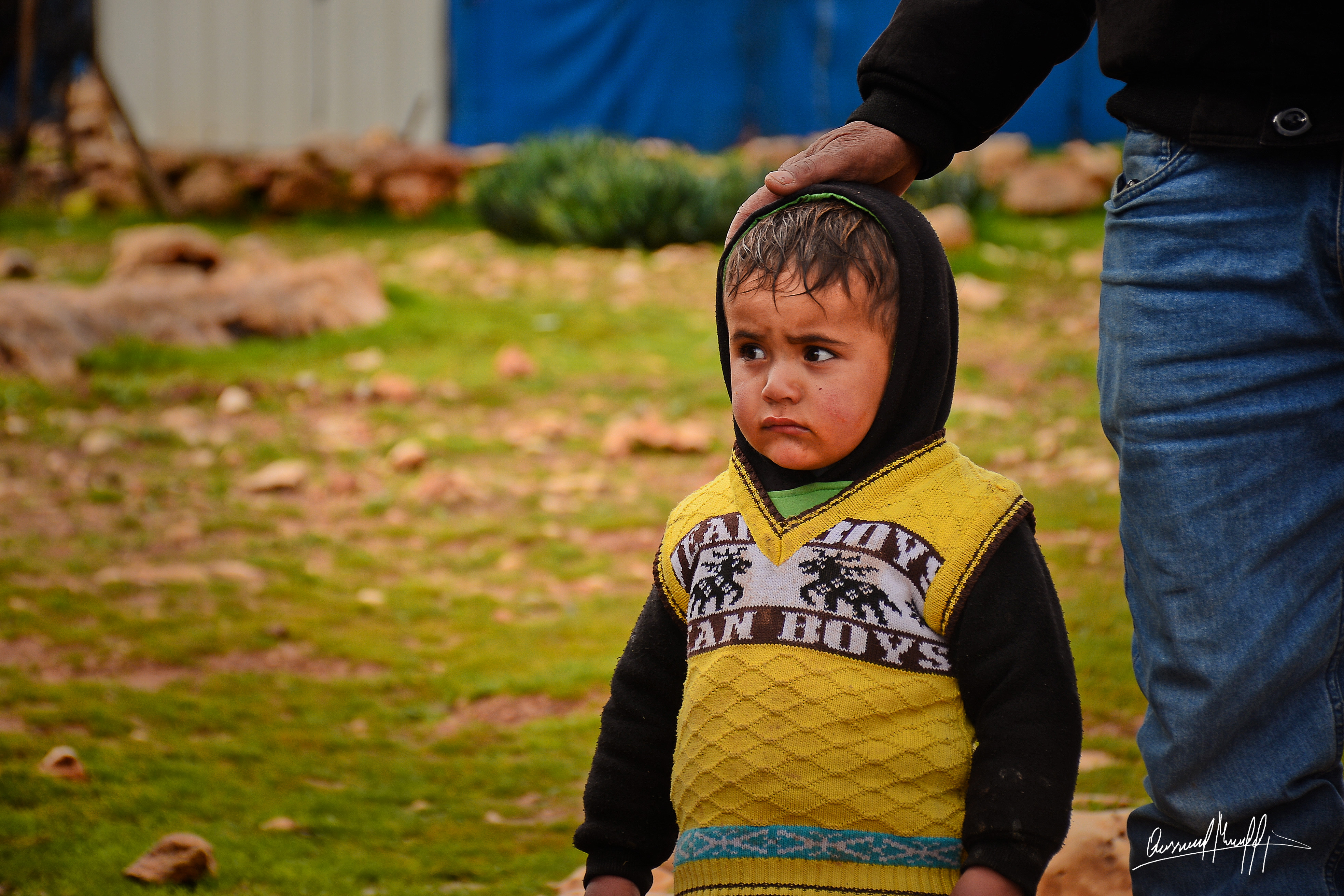


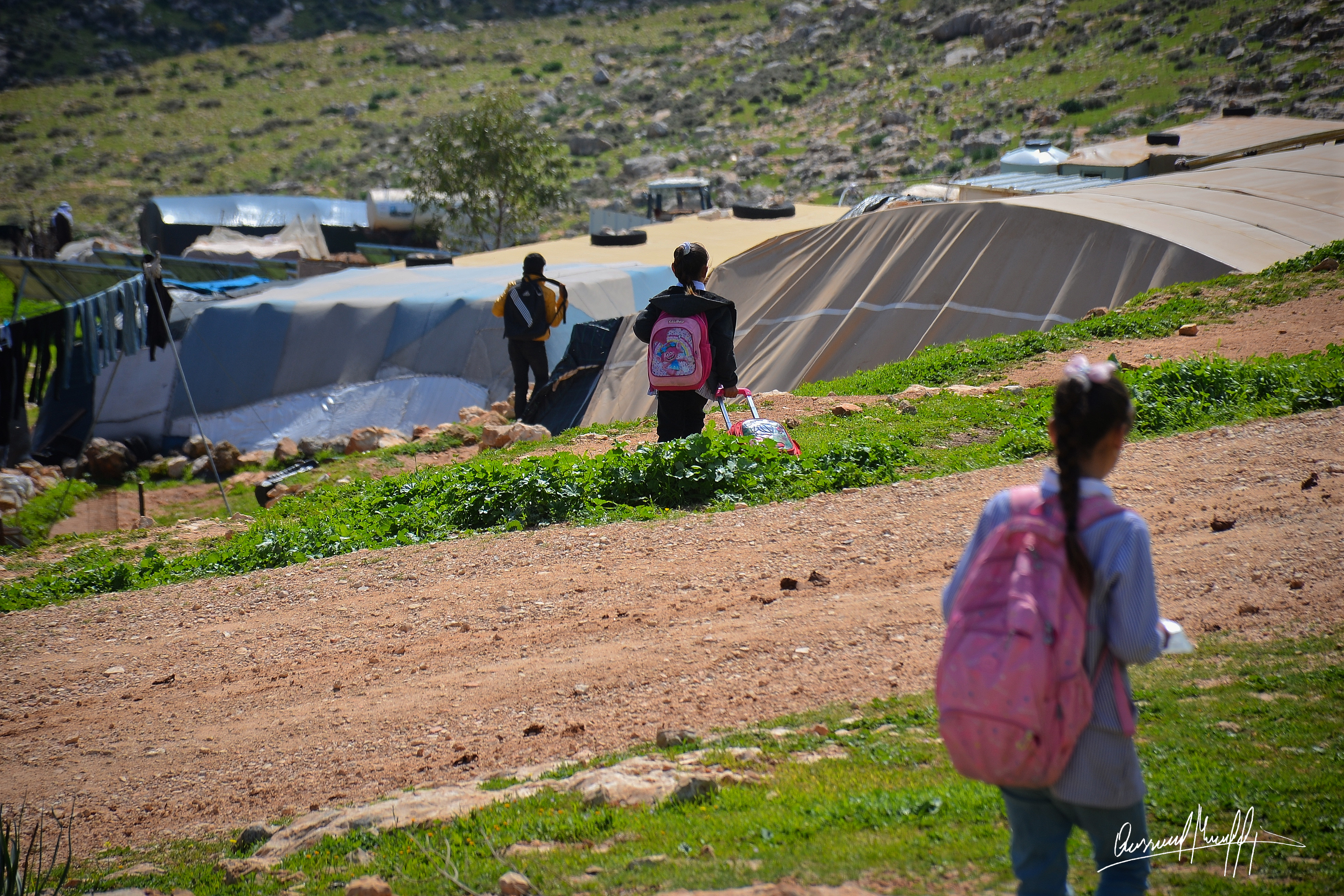
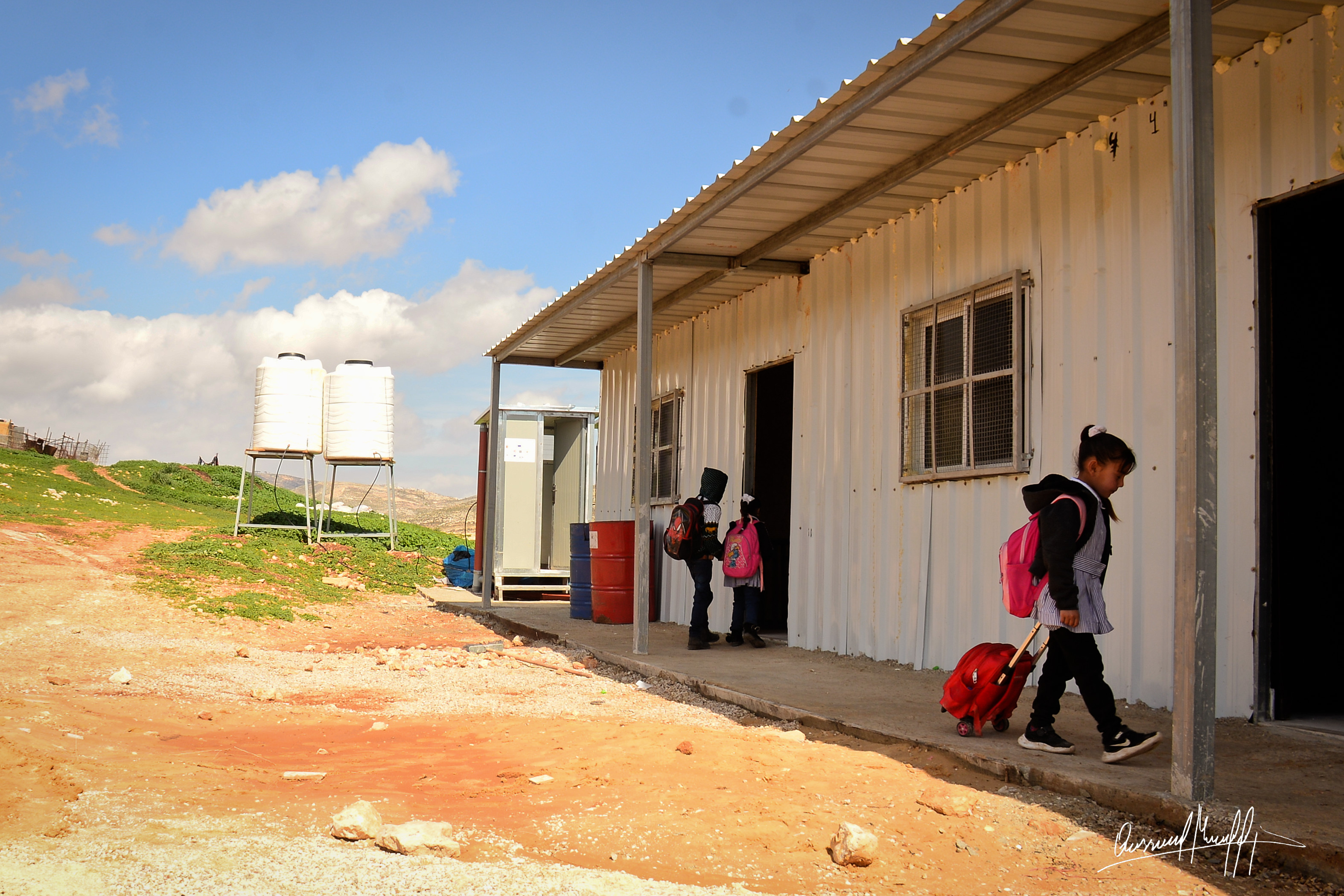



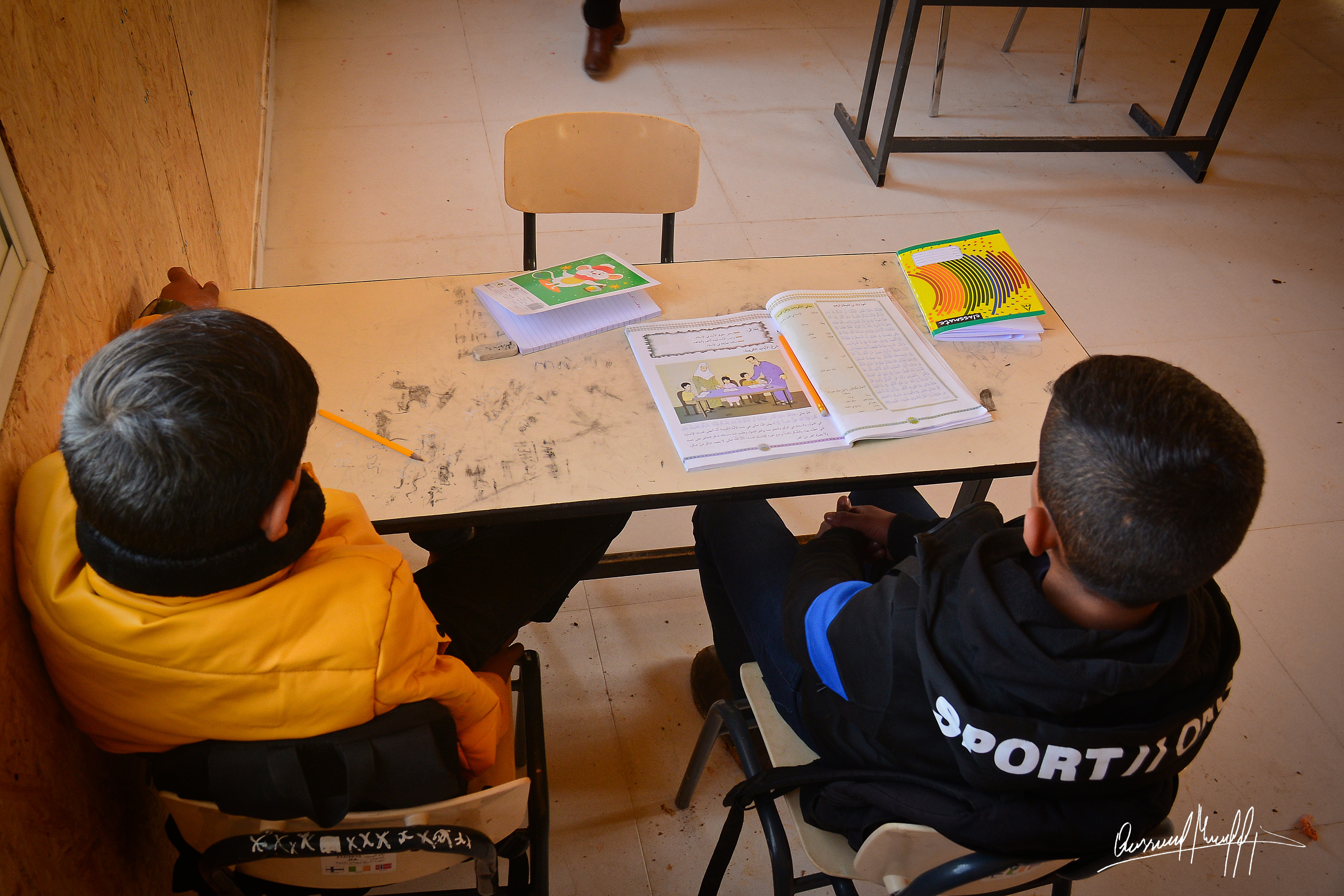

![President Pezeshkian has denounced Israel's attacks on Lebanon [Getty]](/sites/default/files/styles/image_684x385/public/2173482924.jpeg?h=a5f2f23a&itok=q3evVtko)



 Follow the Middle East's top stories in English at The New Arab on Google News
Follow the Middle East's top stories in English at The New Arab on Google News


